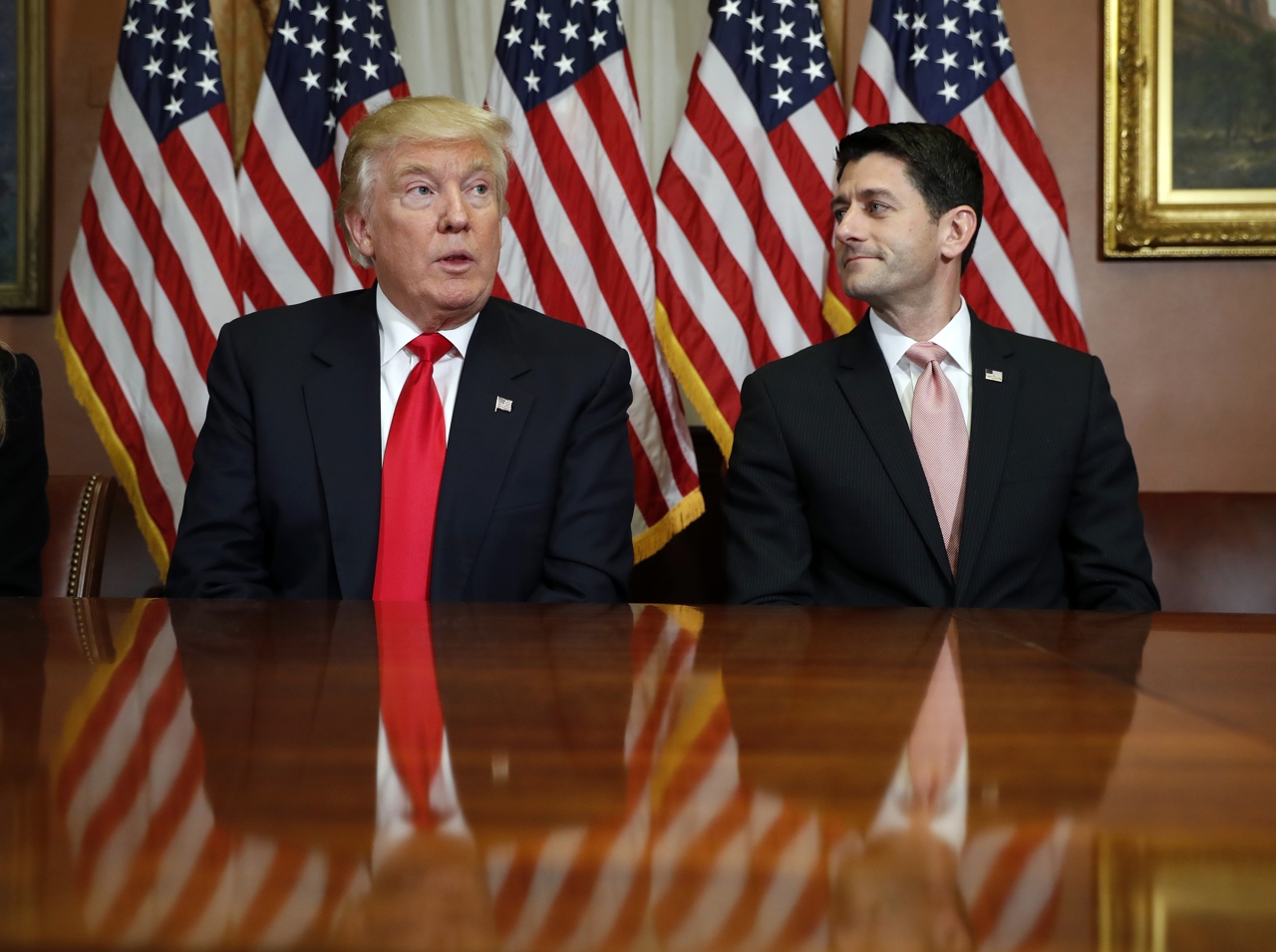
For eight years, a leaderless Republican Party has rallied around its passionate opposition to President Barack Obama and an unceasing devotion to small government, free markets and fiscal discipline.
No more.
On the eve of his inauguration, Donald Trump is remaking the party in his image, casting aside decades of Republican orthodoxy for a murky populist agenda that sometimes clashes with core conservative beliefs. Yet his stunning election gives the GOP a formal leader for the first time in nearly a decade. The New York real estate mogul becomes the face of the party, the driver of its policies and its chief enforcer.
Despite their excitement, Republican loyalists across the country concede that major questions remain about their party’s identity in the age of Trump.
The simple answer: The modern-day Republican Party stands for whatever Trump wants it to.
“He’s a sometime-Republican,” American Conservative Union Chairman Matt Schlapp said. “Donald Trump was elected without having to really put all the details out on all these questions. We are going to see in the first six months how this plays out. Does government get bigger or does it get smaller?”
Trump is eyeing a governing agenda that includes big-ticket items that Schlapp and other conservative leaders would fight against under any other circumstances. Yet some see Trump’s agenda as more in line with the concerns of average Americans, which could help the party’s underwhelming public standing and keep them in power.
The president-elect initially promised a massive infrastructure spending bill to update the nation’s roads and bridges, an investment that could dwarf the infrastructure spending Republicans opposed when it appeared in Obama’s 2009 stimulus package. Trump has also vowed to put the federal government in the child care business by allowing parents to offset child care costs with tax breaks. And he has railed against regional trade deals and threatened to impose tariffs on some imports, a sharp break from the free-market approach that has defined Republican policies for decades.
“From a policy perspective, he might be one of the more flexible Republican presidents. He’s just not encumbered with 30 years of Republican ideology,” said veteran Republican operative Barry Bennett, a former Trump adviser.
“If there’s a win involved, he’s interested,” Bennett said.
Republicans in Congress and elsewhere have expressed some hesitation, but most appear to be willing to embrace the incoming president’s priorities — at least at first.
There are indications that Trump may initially avoid issues that would divide his party. That’s according to Trump’s incoming chief of staff, Reince Priebus, who said in a recent radio interview that the new administration will focus in its first nine months on conservative priorities like repealing Obama’s health care law and rewriting tax laws.
In a postelection interview with The New York Times, Trump acknowledged that he didn’t realize during the campaign that New Deal-style proposals to put people to work building infrastructure might conflict with his party’s small-government philosophy.
“That’s not a very Republican thing — I didn’t even know that, frankly,” Trump said.
Trump’s confusion can be forgiven, perhaps, given his inexperience in Republican politics. He was a registered Democrat in New York between August 2001 and September 2009. And once he became a Republican, his political views were shaped from his perch in New York City, where the Republican minority is much more liberal — particularly on social issues — than their counterparts in other parts of the country.
Trump said he was “fine” with same-sex marriage in a postelection interview in November, for example. And while he opposes abortion rights, he supported Planned Parenthood’s non-abortion-related women’s health services throughout his campaign.
It’s unclear how aggressively Trump will fight for his priorities, but there are signs that he’s not expected to have much tolerance for detractors in either party. He has been remarkably thin-skinned, using Twitter to jab critics like former President Bill Clinton, “Saturday Night Live” and a little-known union official from Indiana.
“You cross him at your peril,” said Rick Tyler, a Republican strategist who worked for Texas Sen. Ted Cruz‘s GOP presidential bid.
Tyler said Trump’s leadership style as he prepares to enter the Oval Office sends a clear message: “Unless you move in my way, I’ll make your life, including Republicans, pretty miserable.”
At the same time, the public’s perception of the Republican Party seems to be improving, albeit modestly.
A NBC/Wall Street Journal Poll conducted in December found that 37 percent of Americans have a positive rating of the GOP compared to 36 percent who have an unfavorable view. That’s slightly better than the Democratic Party, which earns positive marks from 34 percent and negative from 42 percent.
Before Trump’s rise, the Republican Party’s message didn’t necessarily resonate with the needs of “everyday Americans,” said veteran Republican strategist Alex Conant.
“The challenge for the party now is to adopt policies that fulfill those needs. And we have a lot of work to do on that front,” Conant said.
The uncertainty leaves longtime Republican loyalists with more questions than answers about the future of their party.
“The party will be what Trump wants it to be,” said Steve Duprey, a Republican national committeeman from New Hampshire.
Republish with permission of The Associated Press.



